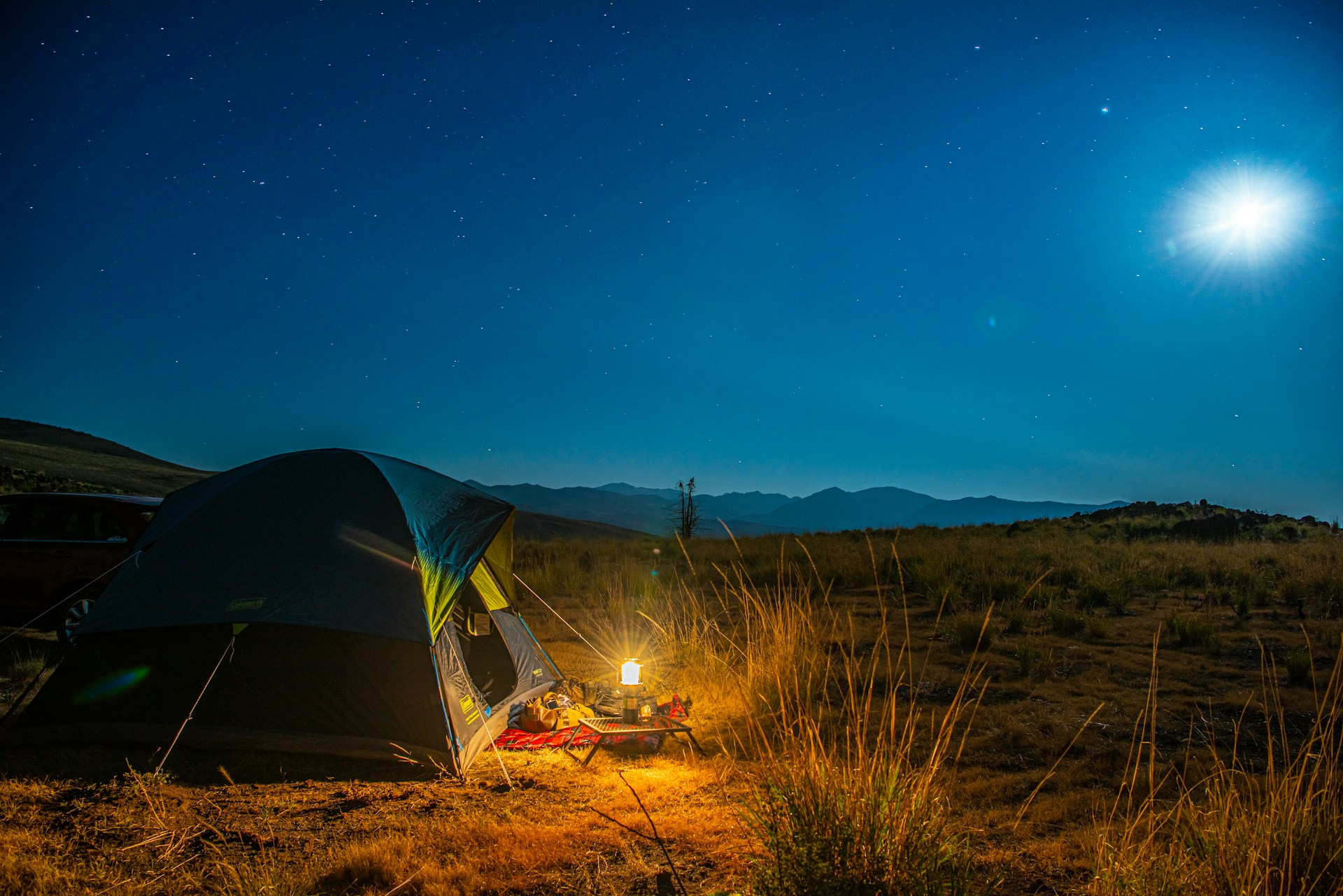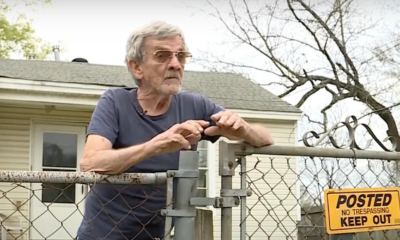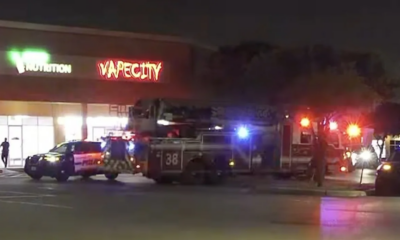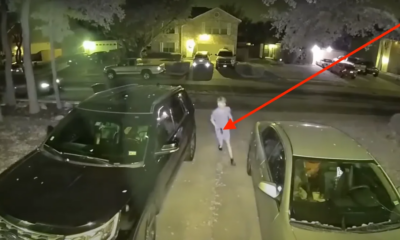Preparedness
Homeowner Defends Family from Giant Intruder in Late-Night Encounter

In the early hours of Tuesday morning, a Washington state homeowner confronted a terrifying situation when a “giant” male intruder entered the bedroom he shares with his wife. The incident, which took place at 1:27 a.m. in the 26600 block of 134th Avenue SE, left the homeowner and his family in shock.
Kent police reported the details to KOMO-TV, and the homeowner, still too shaken to reveal his identity, shared his harrowing experience exclusively with the station.
“You hear stories, and you never think it’s gonna be you — until it’s you, until it’s your family,” he said.
The homeowner described waking up to find the intruder, who he estimated to be at least 6 feet, 5 inches tall, standing in his bedroom with the light turned on.
“It was quick. I woke up, and there was this giant standing in my bedroom,” he recalled.
Reacting swiftly, the homeowner began hitting the intruder with items from a nearby nightstand. This initial struggle allowed him just enough time to retrieve his firearm from a safe.
“I think [being hit with objects] helped to push him out of the door, and I had just enough time to run for my safe [and retrieve my gun],” he explained, adding that he “shot two rounds” but was unsure if he struck the intruder.
The urgency of the situation was heightened by the presence of multiple family members in the home. Besides his wife and daughter, the homeowner’s brother and his family were also staying there, totaling five children in the house at the time.
Despite the chaos, the homeowner did not hesitate to defend his loved ones.
“This is my safe house, this is my home, this is where we live,” he asserted. “I gotta protect my family; that’s just the end of it.”
The incident serves as a stark reminder that such threats can occur unexpectedly, and the homeowner’s actions underscore the instinct to protect one’s family at all costs.
Let us know what you think, please share your thoughts in the comments below.

Preparedness
Illuminate Your Path: Must-Have Features for Survival Lanterns

In the realm of emergency preparedness and outdoor exploration, ensuring you have a dependable light source is crucial. A survival lantern stands as a beacon of safety, guiding you through the dark and helping you navigate through emergencies or wilderness adventures. The right lantern not only illuminates your path but also offers longevity and reliability, thanks to advancements in LED and battery technologies.
When considering a survival lantern, several key features should top your list. First and foremost, opt for lanterns equipped with bright LED bulbs. These bulbs should emit at least 100 lumens to effectively penetrate through darkness and adverse weather conditions. LEDs are favored for their energy efficiency and durability, providing thousands of hours of light without the risk of dangerous fumes or excessive heat.
Rechargeable lithium-ion batteries are another essential feature. These batteries offer longevity and cost-effectiveness, with the ability to last for years and provide over 12 hours of runtime in emergencies. “Maximizing battery life is crucial for survival lanterns.” This ensures that you have a reliable light source without the constant need to purchase replacements. Look for models that charge quickly and can withstand extreme temperatures and physical impacts.
Durability is a critical consideration. A survival lantern should be housed in a robust, waterproof casing to endure the elements, including drops, dust, and moisture. Rubberized coatings or materials like ABS plastic and aircraft-grade aluminum enhance the lantern’s ability to withstand harsh conditions.
Flexibility in lighting modes is another advantage. Having multiple settings such as low, medium, and high allows you to adjust the brightness based on your needs, conserving battery life when necessary. Strobe and SOS modes are invaluable for signaling for help in emergencies.
Portability is also key. Compact and lightweight designs make it easy to store and carry your lantern. Integrated handles or hooks allow you to hang the lantern, freeing your hands for other tasks. Some models even feature a magnetic base for versatile placement.
For those looking to charge devices on the go, some lanterns come with USB ports, enabling you to power your phone or other essential gadgets. This feature can be lifesaving for communication and navigation during emergencies.
Incorporating solar charging capabilities can further enhance the utility of your survival lantern. Efficient solar panels can recharge the batteries in approximately 8 hours of direct sunlight, providing a sustainable power source even when off the grid.
When selecting a lantern for camping or hiking, consider models with adjustable brightness settings, typically ranging from 100 to 500 lumens. This range is sufficient for most camping activities without being overly blinding. Additionally, ensure the lantern is water-resistant (IPX4 or higher) and impact-resistant to withstand outdoor conditions.
For vehicle emergencies, compact lanterns with magnetic bases or hooks are ideal, allowing you to attach them inside your car. Flashing red emergency signals can also aid in alerting rescuers to your location.
To maintain your lantern’s functionality, check battery levels and recharge monthly. Regularly clean the exterior to prevent dirt and debris from affecting performance, and store it properly to avoid damage.
By prioritizing these features, you can select a survival lantern that provides reliable, long-lasting illumination, ready to light your way through any challenge, whether at home or in the wilderness.
Let us know what you think, please share your thoughts in the comments below.
Preparedness
Discover the Secret to 25-Year Emergency Food Supplies

When it comes to emergency preparedness, ensuring a reliable food supply is crucial. Meals Ready-to-Eat (MREs) are a staple in any disaster readiness plan, and Patriot MRE food kits stand out for their comprehensive nutrition and long shelf life. These kits are crafted to be a dependable food source during emergencies when regular access to fresh groceries may be disrupted.
Patriot MREs are designed to last between 5 to 10 years, with some brands claiming up to 25 years when stored properly. This longevity is achieved through advanced preservation techniques like nitrogen flushing and vacuum sealing, which effectively remove oxygen and prevent spoilage. The meals are stored in durable pouches that protect them from moisture, light, and oxygen, ensuring they remain fresh and nutritious over time.
“Patriot MRE food kits provide complete nutrition and long shelf life, making them an essential component of any emergency preparedness plan.” Each kit is designed to meet a person’s daily caloric needs, offering a range of familiar, tasty foods such as pasta, eggs, and chicken. With a focus on balanced nutrition, these meals provide over 2,000 calories per day, ensuring sufficient energy and protein intake during a crisis.
One common concern about emergency food supplies is the potential lack of taste or variety. However, Patriot MRE kits address this with a diverse selection of meals, including options like chili mac, chicken fajita pasta, and biscuits and gravy. The meals are packaged in resealable pouches, allowing for portion control and storage of leftovers, which is particularly useful in long-term emergencies.
Proper storage is key to maximizing the shelf life of Patriot MREs. It’s recommended to keep them in a cool, dark place, such as a basement or root cellar, to maintain maximum freshness. “With a 25 year shelf life, Patriot Supply MREs lead the industry,” making them a reliable choice for long-term emergency food reserves.
Several brands offer high-quality Patriot MREs, each with unique features. My Patriot Supply is renowned for its durable, resealable pouches and a wide range of meal options, ensuring over 2,000 calories per day. Their kits are engineered to last up to 25 years, providing reliable nutrition when needed most.
4Patriots focuses on convenience with grab-and-go pouches that are designed to withstand extreme conditions while delivering essential nutrients. Ready Hour offers bulk options with diverse menus, making it an affordable choice for those looking to stock up on emergency food supplies. Meanwhile, Mountain House is known for its gourmet flavors and 30-year shelf life, offering a premium option for those who prioritize taste.
Building a customized emergency food supply is a smart strategy to meet your household’s unique needs. Start by calculating the daily caloric requirements for each family member, taking into account factors like age, health conditions, and activity levels. Customize your stockpile by purchasing individual pouches that align with your family’s dietary preferences and restrictions.
To get the most out of your investment, proper storage is essential. “Store pouches in a cool, dry place with temperatures below 75°F” to ensure they retain their nutritional value and taste. Regularly rotate your stock and monitor expiration dates to maximize freshness.
In addition to food, don’t forget to include water and preparation tools in your emergency planning. MREs require water for preparation, so ensure you have adequate water storage and purification methods. Portable cooking tools, such as a camping stove and utensils, are also necessary for meal preparation in the absence of electricity.
Overall, Patriot MREs provide a practical and nutritious solution for emergency preparedness. With their long shelf life, balanced nutrition, and convenient packaging, these kits offer peace of mind and sustenance during times of crisis.
Let us know what you think, please share your thoughts in the comments below.
Preparedness
Hidden Storage Spaces for Ultimate Preparedness

Starting your journey into preparedness can be daunting, especially when it comes to finding storage space for all your essential supplies. Many people find themselves saying, “I don’t have anywhere to put all these preps!” Without a basement or dedicated storage room, it can feel like an impossible task. However, there are several creative strategies to maximize your available space.
Firstly, remember that food items require a cool, dark environment with minimal temperature fluctuations, so avoid storing these in garages or unheated areas. Non-food items don’t have these restrictions and can be safely stored in places like the garage or attic.
One often overlooked space is right under your bed. By swapping your bed frame for a taller one with a lift top, you can gain a significant amount of hidden storage. The exact amount of space will depend on the size and height of your bed. You can purchase storage bed frames or, if you’re handy, construct your own. These frames come in various configurations, some more discreet than others.
If you’re storing dehydrated food, such as the kind from MyPatriotSupply, you might be able to fit a year’s supply for one or two people under your master bed. For children’s beds, consider a captain’s bed with cupboards accessible from the opposite side of the drawers. This setup allows for organized storage of various items, from long-term food to clothing and toys, keeping the room tidy and functional.
Another underutilized space is beneath the stairs. You can create access points from the lower level or even from the treads if you’re skilled in DIY projects. This can provide a surprising amount of additional storage.
For homeowners, consider creating shelving between the studs in your walls. This method offers a discreet way to store canned food and other items. There are metal units available specifically designed for this purpose, allowing for easy rotation and access. This approach helps prevent food from expiring unnoticed at the back of your pantry.
Innovative furniture solutions can also contribute to your storage needs. For instance, you can transform 5-gallon buckets into “coffee tables” by placing a wooden top over them and covering it with cloth. Alternatively, move your sofa out by about six inches and stack #10 cans behind it, topped with a board.
Maximize your space by using organizers and shelves, and clear out items you no longer need. You’ll be amazed at how much space is freed up with a little organization.
Bookshelves, for example, can double as storage for canned food and sealed pouches. Most books are 6 to 8 ½ inches wide, leaving room to discreetly store canned goods behind them. Taller hardbacks can conceal a double row of cans, while pouches stand up neatly on their own.
Finally, maintain an inventory of your preps. Knowing exactly what you have and where it’s stored is crucial for effective preparedness. This will also help you identify any gaps in your supplies, ensuring you’re always ready for whatever comes your way.
Let us know what you think, please share your thoughts in the comments below.
-

 Tactical12 months ago
Tactical12 months ago70-Year-Old Fends Off Intruder with Lead-Powered Message
-

 Tactical12 months ago
Tactical12 months agoVape Shop Employee Confronts Armed Crooks, Sends Them Running
-

 Preparedness8 months ago
Preparedness8 months agoEx-Ballerina’s Guilty Verdict Sends Tremors Through Gun-Owner Community
-

 Preparedness6 months ago
Preparedness6 months agoGood Samaritan Saves Trooper in Harrowing Interstate Confrontation
-

 Tactical12 months ago
Tactical12 months agoMidnight SUV Theft Interrupted by Armed Homeowner’s Retaliation
-

 Survival Stories1 year ago
Survival Stories1 year agoEmily’s 30-Day Experience of Being Stranded on a Desert Island
-

 Preparedness7 months ago
Preparedness7 months agoArizona Engineer’s Headless Body Found in Desert: Friend Charged
-

 Preparedness7 months ago
Preparedness7 months agoBoy Saves Dad from Bear Attack with One Perfect Shot
Larry Houska
September 7, 2024 at 12:37 pm
The Lord helps those who help themselves
Helen
September 7, 2024 at 7:49 pm
Scary situation and unfortunately this is not an isolated case. Thankful that the homeowner was a gun owner and was able to protect his family. The article didn’t indicate the status of the intruder-illegal, homeless, etc. Open borders and high inflation might be a reason for the intrusion. Even becoming a prisoner in your home from the outside forces isn’t a guarantee of your safety anymore. Thankful that everyone is safe.
CPO Bill
September 7, 2024 at 9:38 pm
Status means nothing,the intruder got what was coming to him!
Paul
September 8, 2024 at 5:18 pm
The only bad thing is, it didn’t say the intruder was dead! Firearms are absolutely necessary to protecting yourself, your family and your home!